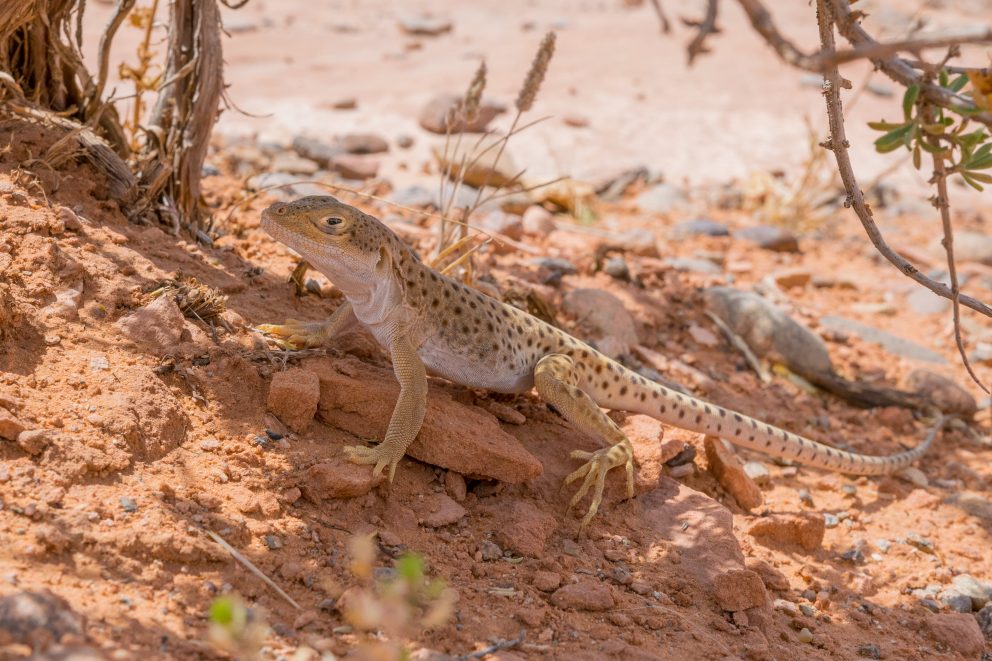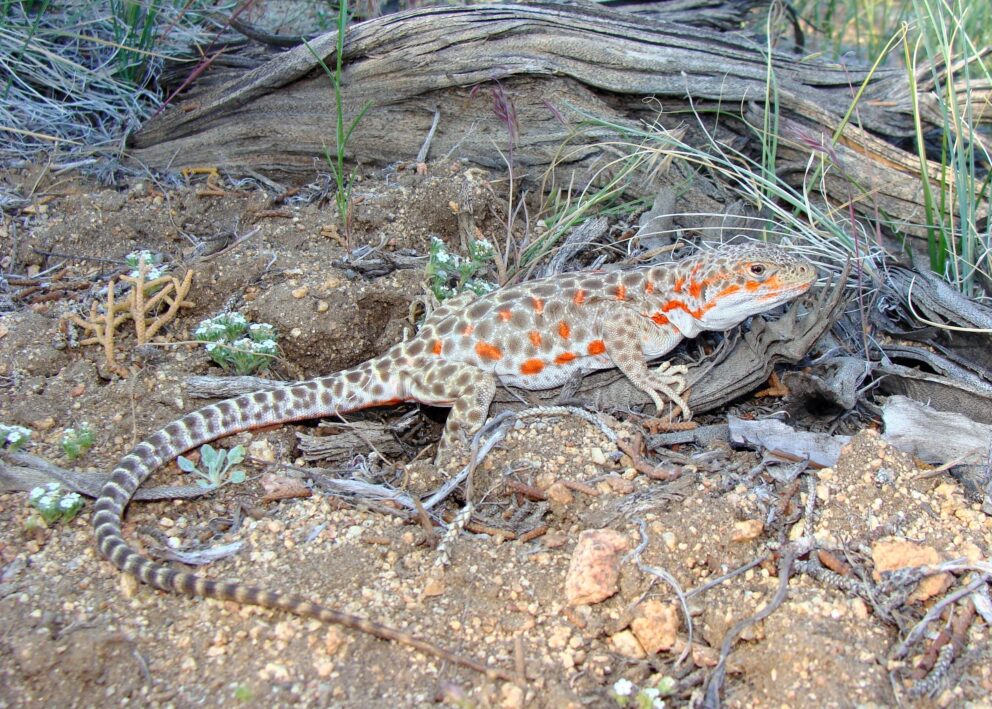- SCIENTIFIC NAME
- Gambelia wislizenii
- CLASSIFICATION
- Reptile
- LIFE SPAN
- 5-7 Years
- STATE CONSERVATION STATUS
-
- Priority Species
- Unprotected
- FEDERAL CONSERVATION STATUS
- Least Concern
- GAME STATUS
- Non-Game
- Washoe
- Humboldt
- Pershing
- Churchill
- Mineral
- Lyon
- Douglas
- Carson City
- Storey
- Elko
- Lander
- Eureka
- White Pine
- Esmeralda
- Nye
- Lincoln
- Clark
Habitat & Range
The Long-nosed Leopard Lizard is found throughout Nevada. They prefer areas that are sandy and rocky with low shrubs. They do not like densely vegetated areas because they can’t run to escape potential predators. They use mammal burrows to lay their eggs.
- Cold desert shrubland and sagebrush
- Mojave desert
- Warm desert riparian
Threats
- Habitat Degradation - Due to Invasive Species
Natural History
The Long-nosed Leopard Lizard eats insects, spiders, lizards, snakes, small rodents, and soft leaves, blossoms, and berries. They can eat a lizard that is nearly the same size as themselves! This species is ground dwelling but sometimes climbs into bushes. When threatened, it typically runs to the base of a shrub and remains motionless.
The Long-nosed Leopard Lizard is not territorial and, other than interactions associated with mating, adults appear to be rather oblivious of each other. They are not active in cold weather but are active from May-August in the northern part of the state, and March or early April through late August-late October in the south. Lizards active in late summer are usually hatchlings.
Fun Facts














